The wind rustles through the tall grass, the waves crash against the cliffs, and the sky stretches out past the horizon. It’s as if you’re standing at the end of the world.
Welcome to South Point.
This secluded spot, miles away from any resemblance of a town, exudes a sense of calm yet powerful energy that’s truly mesmerizing.
Besides being the southernmost point in the United States, South Point is also an adventurer’s playground: It has a huge cliff jump, miles of off-roading trails, and one of only four green sand beaches on the planet.
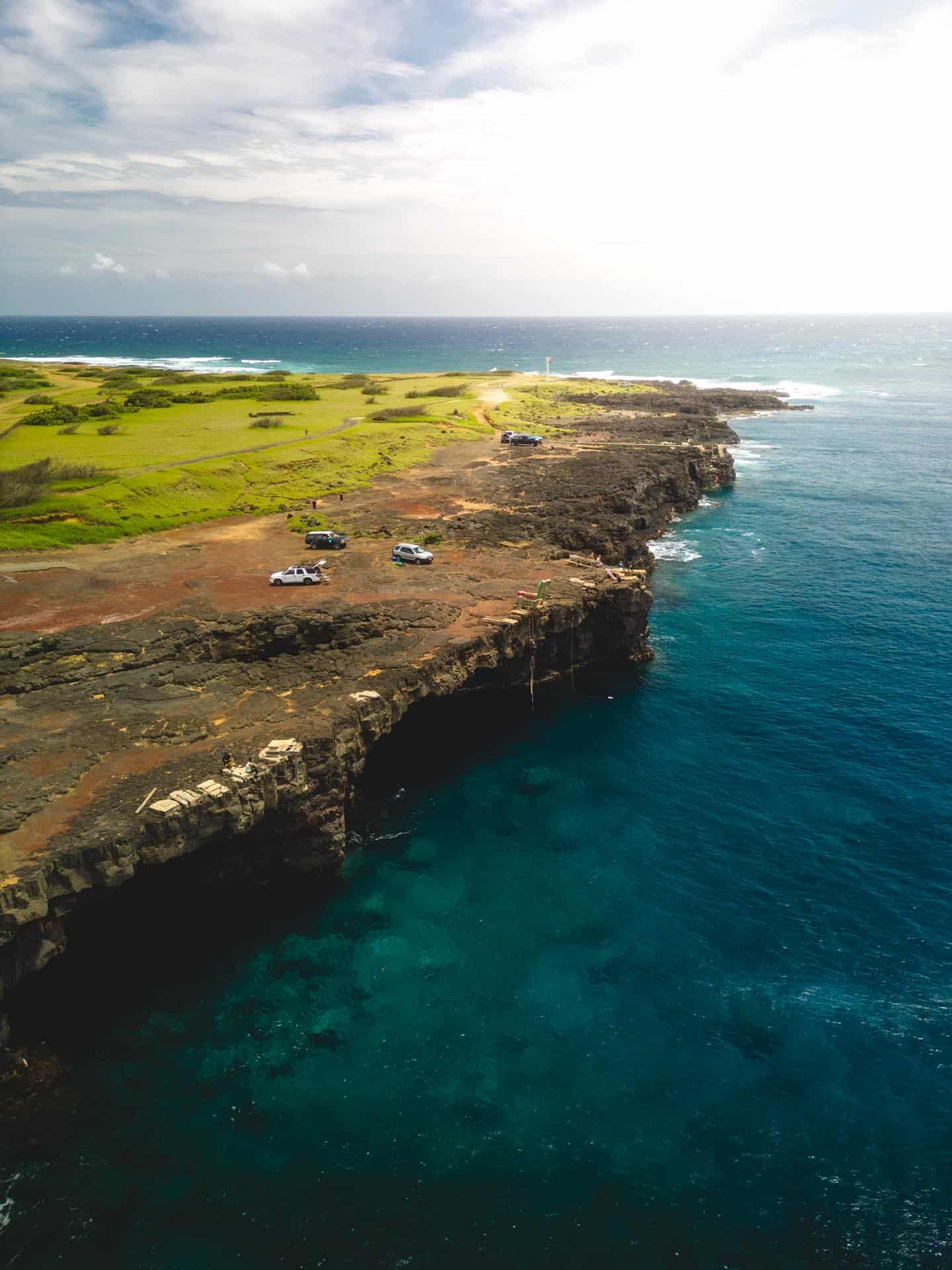
The South Point Cliff Jump
Location: South Point Cliff Dive – Google Maps
The South Point cliff jump is a leap from a towering 40-foot cliff into the ocean.
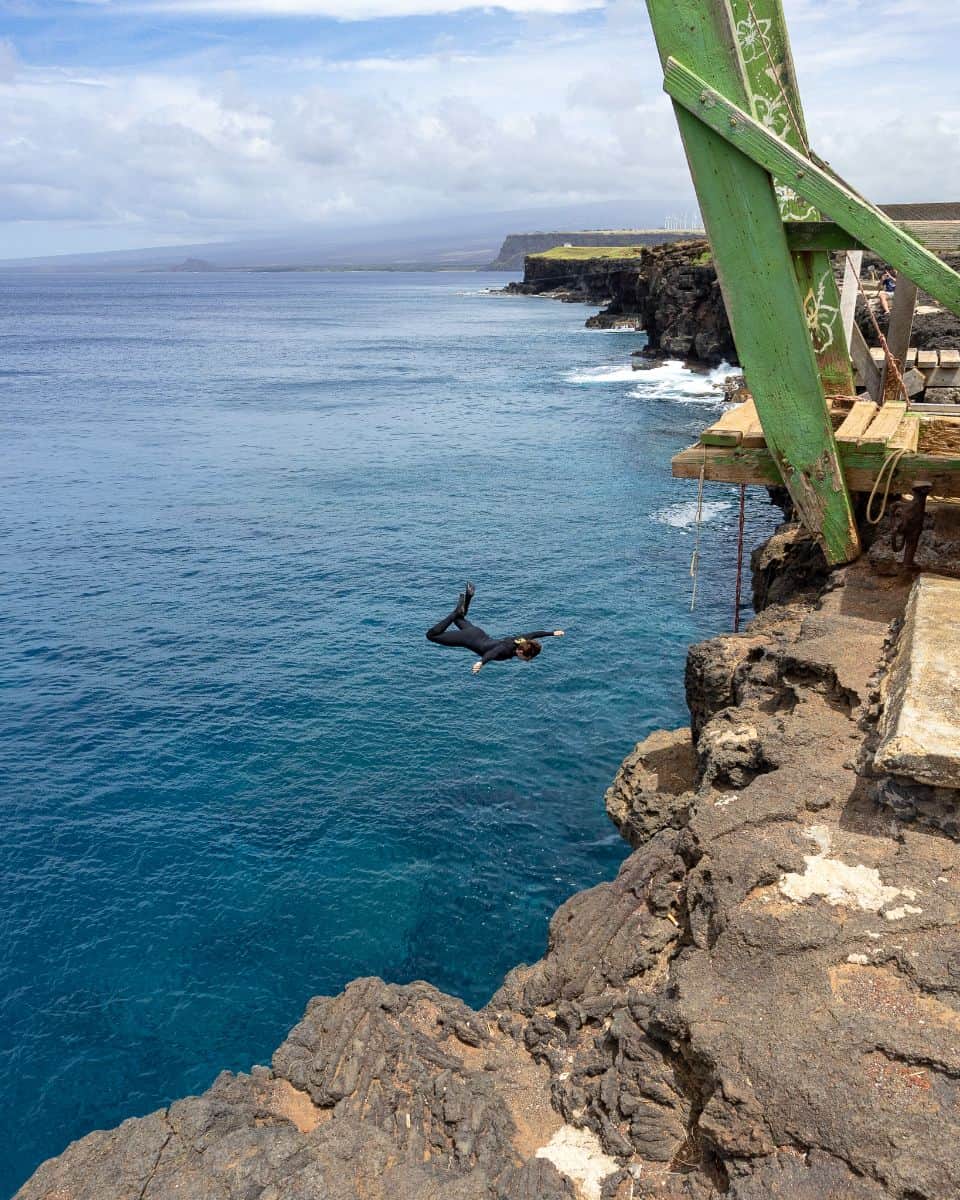
I visited this spot in 2014 and a friend hurt his shoulder doing this jump. So aim to enter the water feet-first with your arms tucked in. This reduces the chance of injury upon impact with the water.
The South Point cliff jump is actually two challenges: the jump itself, and the gritty climb out afterwards.
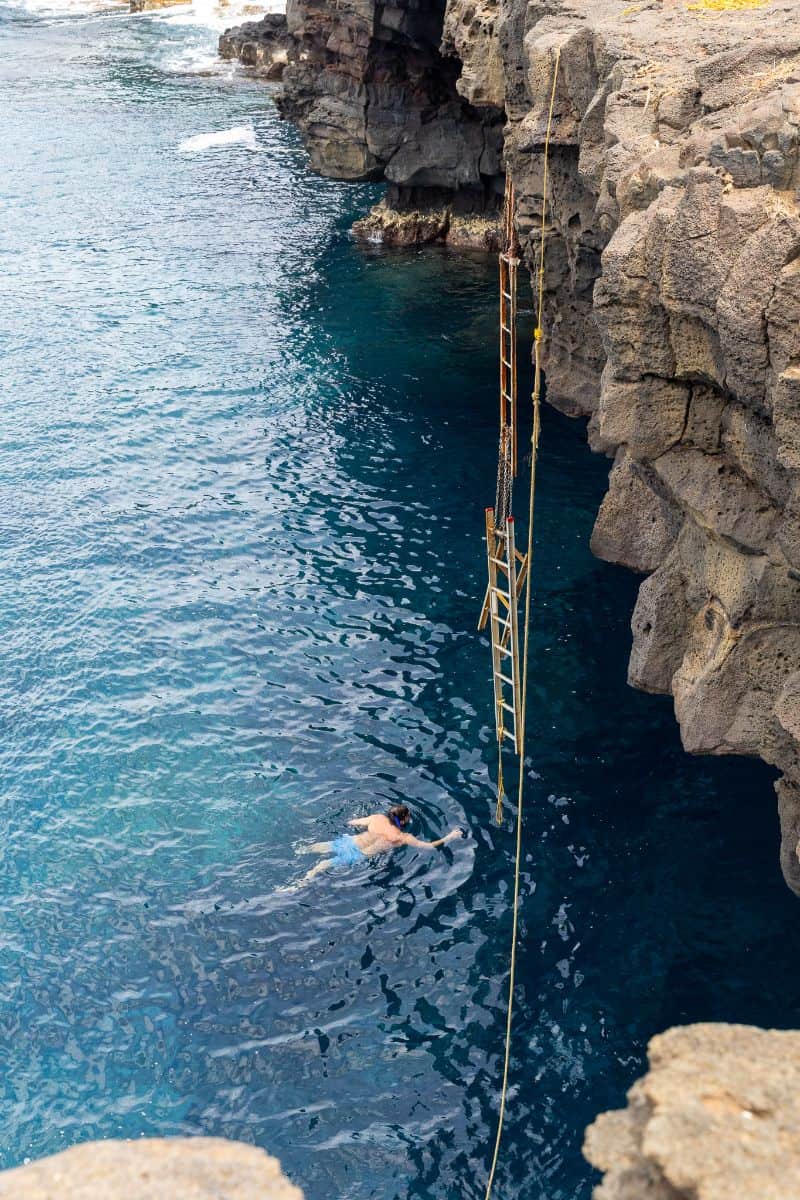
To get out of the water after the jump, you need to climb up a busted old ladder held together by ropes.
Snorkeling at South Point
South Point offers snorkeling opportunities like no other.
From the moment you put on your mask and dip below the surface, it’s like entering another world.
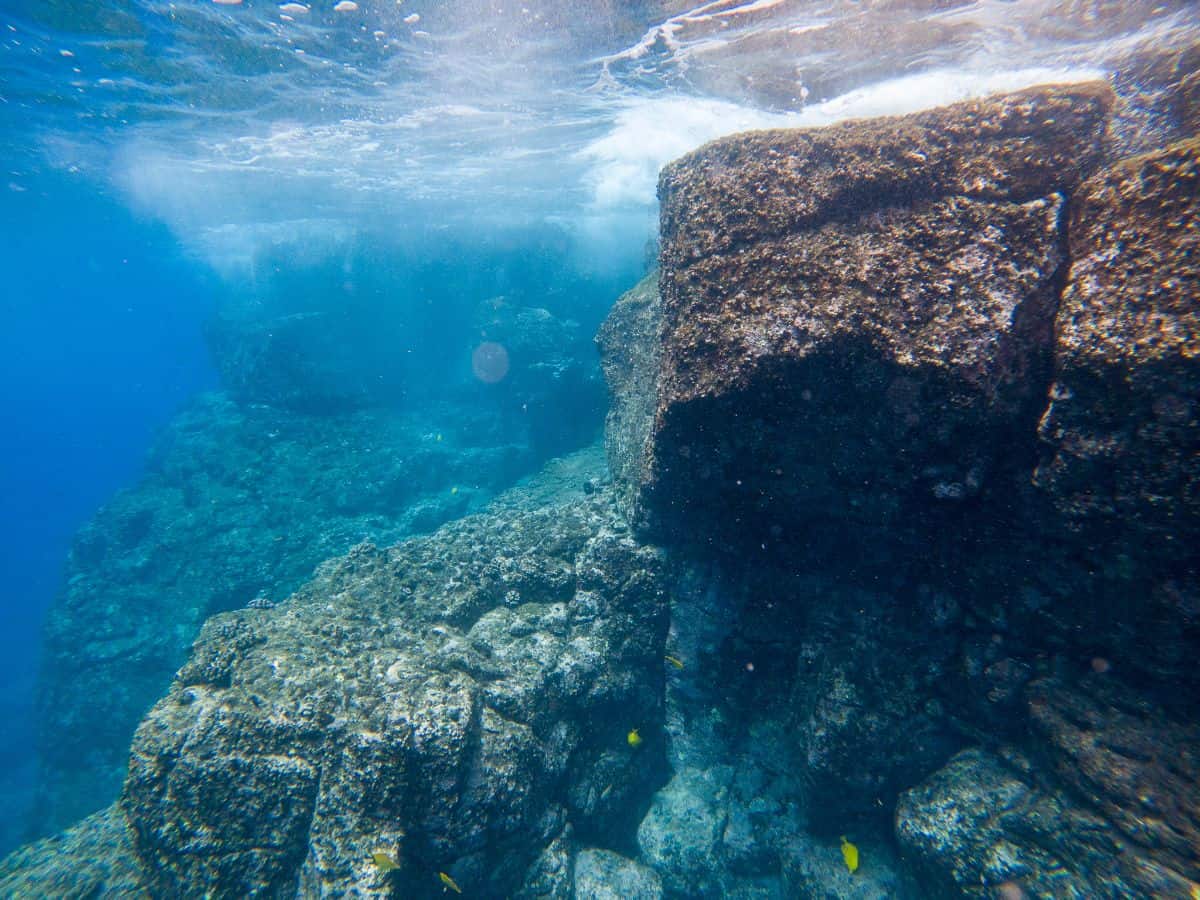
I snorkeled at South Point and the first thing I noticed was the depth. The water here reaches depths of over 30 feet near the cliffs. The blend of closeness and remoteness makes snorkeling at South Point a unique experience.
While snorkeling, I saw fewer but larger fish than other snorkel spots on the Big Island.
The most interesting part about snorkeling at South Point is how close you are to land, while simultaneously in the deep ocean.
The biggest challenge about snorkeling at South Point is getting out of the water. You’ll need to be patient and time the waves to give you a “push” out of the water.
Due to the depth and ocean currents, South Point is best suited for experienced snorkelers. Always check conditions before entering the water and have a buddy with you.
The Actual ‘South Point’
The actual ‘south point’ itself might seem a bit underwhelming compared to the rest of the area. It’s about a 5-minute walk from the parking area near the cliff jump.
On the way there, you’ll pass by a lighthouse and a heiau (a Hawaiian sacred site) as you follow the rock wall toward the ocean.
Eventually, you’ll reach a rocky coral beach and see the actual south point peering out amongst the shoreline.

Papakolea Green Sand Beach

A stone’s throw from South Point lies a rare gem – Papakolea, one of only four green sand beaches on the planet.
The green sand comes from the presence of olivine crystals, often referred to as peridot.
While not every grain of sand here is olivine, you can easily pick out the green pieces from a handful of sand.
While you might envision an enchanting emerald beach, in reality, we found it has more of a subtle brownish-green color. But it still has a distinctive dark green undertone that makes it one of a kind.
The path to the green sand beach is an adventure in itself. It’s a 2.5-mile hike one way on a trail that cuts through hot, dry, windswept terrain. The hike is not overly strenuous, but remember to wear sturdy shoes, lots of sun protection, and bring water.

If you end up hiking to Green Sand Beach, here’s a tip: Follow the high roads on the left (mauka) side. These paths are typically smoother, more gradual, and easier to navigate.
If you don’t want to hike, there are locals in 4×4 trucks that will bring you there for $20. They load everyone up in the back of their truck and shuttle tourists back and forth from the green sand beach.
The locals in trucks are pretty insistent on casting doubt on the skills of would-be hikers by telling them that the hike takes much longer than it actually is. However, in our experience, the hike takes about 50 minutes each way.
Fishing at South Point
The heritage of fishing at South Point is alive and well today – albeit with a modern twist.
Local anglers manage to reel in impressive catches right from the shore. These include larger species like ahi, ono, and mahi, typically associated with deep-sea fishing.
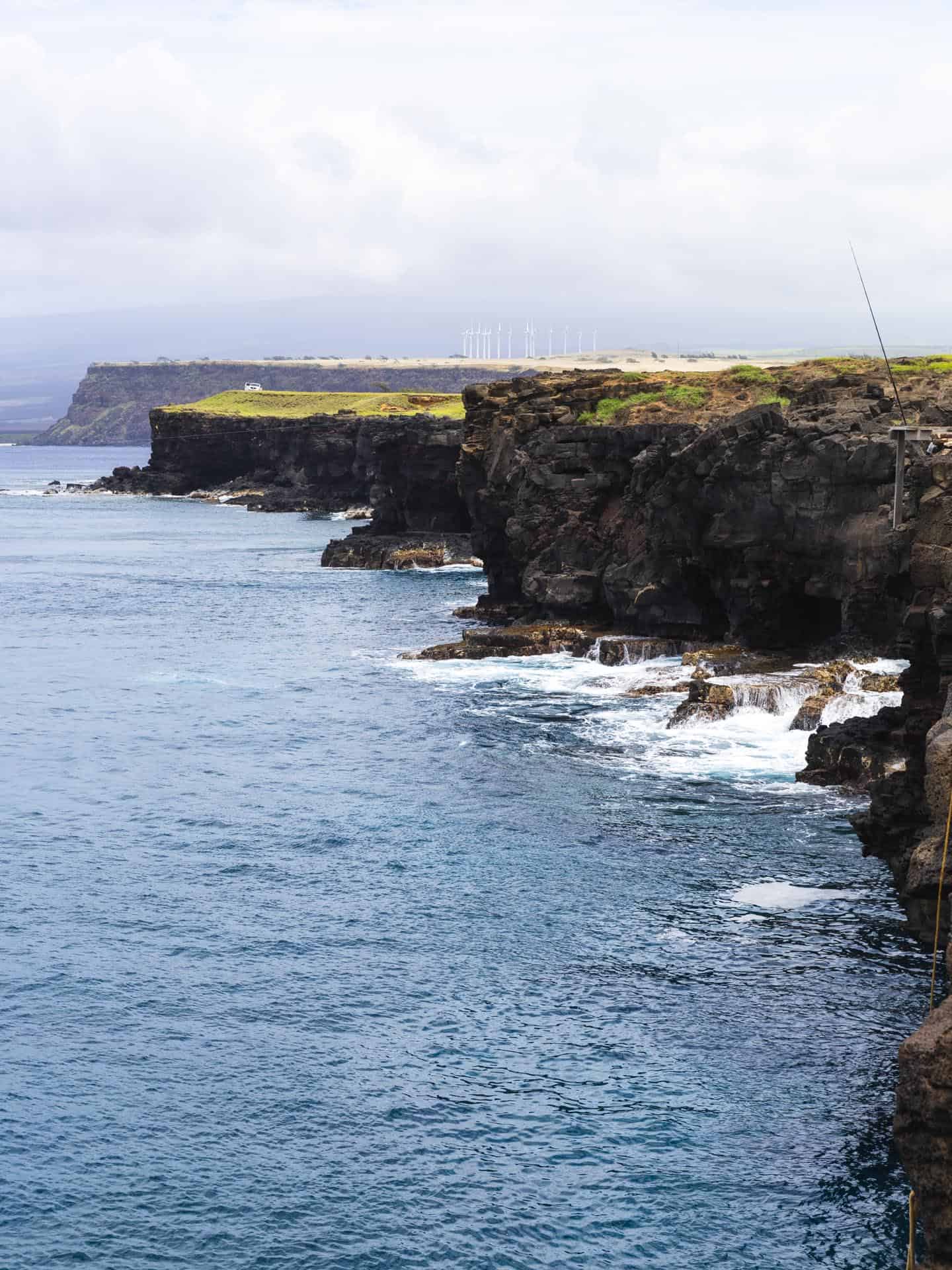
How do they do it? South Point’s powerful winds are their secret weapon. They cleverly attach trash bags to their fishing lines, harnessing the gusts to carry their bait far into the ocean depths, all without leaving the shoreline.
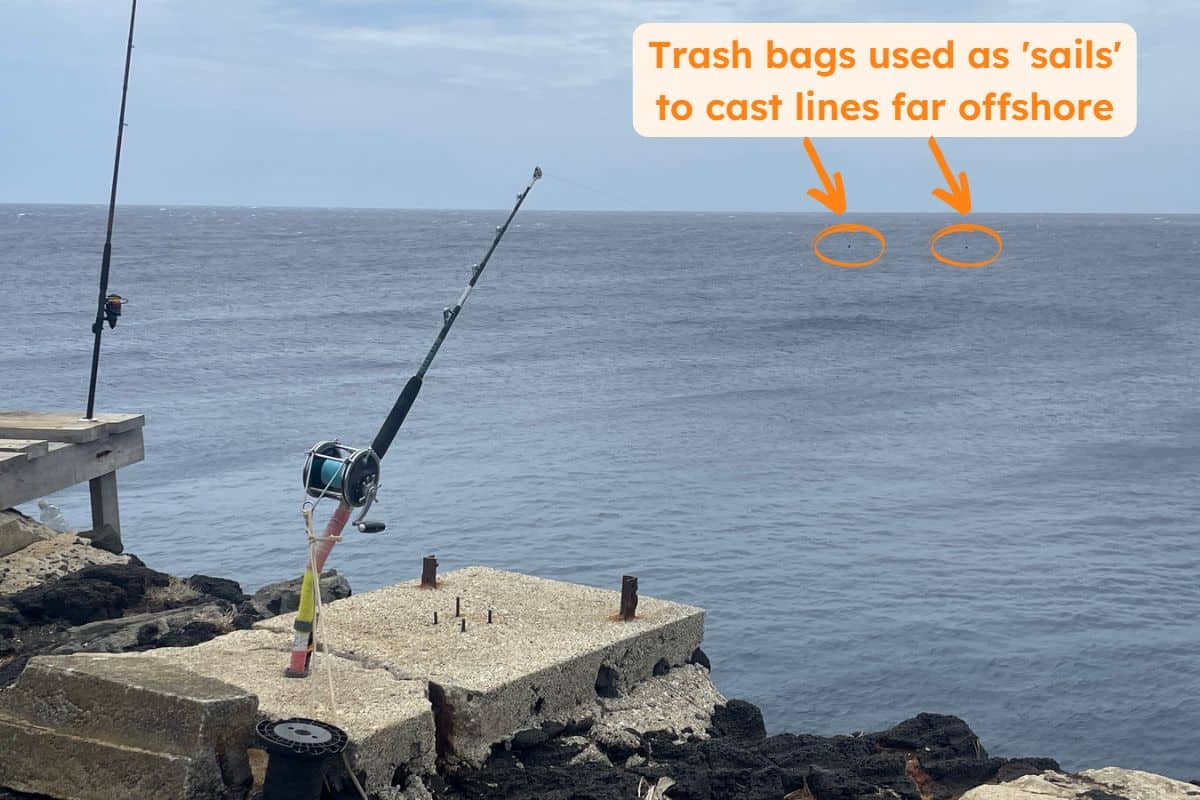
Essential Tips for Visiting South Point

Before you head to South Point, some essential planning tips are in order.
- Don’t forget to bring lots of water! South Point is hot and dry and you’ll find yourself drinking more water than normal.
- Wear lightweight, breathable clothes – your best bet against the heat.
- The sun at South Point is potent, so wear a hat and sunglasses when walking around the area. We also wear long-sleeved clothing since it helps protect against the sun.
- It’s a rural area, so pack some snacks. We brought some bentos and water with us in our cooler, that way we wouldn’t need to worry about food or water all day.
Trust us – there’s not much civilization out there. The closest stores to South Point are 13 miles away in Na’alehu so you’ll want to bring water and snacks with you ahead of time.
The History of South Point

Some sources say that the earliest evidence of human habitation at South Point was 124 AD.
However, the actual archaeology study that dated these remains concluded that the burnt log dated 124 AD was most likely a piece of burnt driftwood or the remains of a castaway’s fire – not evidence of consistent human habitation.
The study also concluded that the earliest permanent fishermen of South Point were there not earlier than 1000 AD, and abandoned the area sometime around 1350 AD.
The abandonment of the area is thought to have been due to a shift in the prevailing winds that exposed the area to wind-whipped sands.
Because of the strong winds and deep ocean currents at South Point, fishing from canoes was difficult. So the Hawaiians came up with a solution – they used rope to tie their canoes off to mooring holes on the rocky shoreline.
The Hawaiians allowed the strong winds to carry their canoes out to sea where they could fish, then used the ropes to bring them back to shore.
The Hawaiians also carved flat, rectangular “pans” into some of the rocks on the shoreline. They would fill up these pans with salt water and allow the water to evaporate – leaving the salt behind. They used this salt to preserve their fish.





